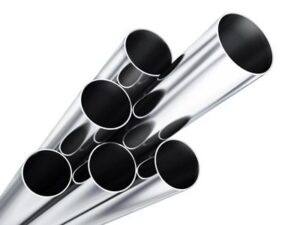Description
Heat Exchanger Tubes: The Unsung Heroes of Thermal Efficiency
Heat exchangers are ubiquitous, playing a critical role in a vast array of industries, from power generation and chemical processing to refrigeration and HVAC. While often overlooked, the tubes within these heat exchangers are the workhorses responsible for facilitating efficient heat transfer between two or more fluids. Understanding the importance of these tubes, their various types, and the factors influencing their performance is crucial for optimizing system efficiency and longevity.
The Vital Role of Heat Exchanger Tubes
At their core, heat exchangers operate by transferring thermal energy from a hotter fluid to a cooler fluid without allowing them to mix. Tubes act as the physical barrier separating these fluids, providing a large surface area for heat exchange. The effectiveness of a heat exchanger hinges significantly on the properties of these tubes.
Material Selection: Balancing Performance and Durability
The material chosen for heat exchanger tubes must possess a specific combination of properties to withstand the demanding operating conditions. Key considerations include:
- Thermal Conductivity: A high thermal conductivity is paramount for efficient heat transfer. Materials like copper, aluminum, and their alloys are popular choices due to their excellent heat transfer capabilities.
- Corrosion Resistance: The tubing material must resist corrosion from the fluids flowing within and around it. This is particularly critical in harsh environments or when dealing with corrosive fluids. Stainless steel alloys are often employed for their superior corrosion resistance.
- Mechanical Strength: Tubes must withstand the pressures and temperatures to which they are subjected. Factors like tensile strength, yield strength, and creep resistance are important considerations.
- Fouling Resistance: Some materials are more prone to fouling – the buildup of deposits on the tube surface, which can significantly reduce heat transfer efficiency.
- Cost: The cost of the material must be balanced against its performance characteristics and lifespan.
A Variety of Tube Designs
Beyond the material, the design of the tubes significantly impacts the overall performance of the heat exchanger. Common tube types include:
- Plain Tubes: These are the simplest and most cost-effective option, offering a smooth, uninterrupted surface for heat transfer.
- Finned Tubes: Fins are attached to the outer surface of the tubes, dramatically increasing the surface area exposed to the surrounding fluid. This enhances heat transfer, particularly in applications involving gas-to-liquid heat exchange.
- Enhanced Surface Tubes: These tubes feature specially designed surface patterns, such as grooves or corrugations, to promote turbulence and increase heat transfer coefficients.
- U-Tubes: These tubes are bent into a U-shape, allowing for thermal expansion and contraction, reducing stress on the tube sheet.
Factors Affecting Tube Performance
Several factors can impact the efficiency and lifespan of heat exchanger tubes:
- Fluid Flow Rate: Optimizing the flow rate of the fluids within and around the tubes is crucial. High flow rates can increase heat transfer, but also lead to higher pressure drops and erosion.
- Temperature Difference: A larger temperature difference between the hot and cold fluids drives a higher rate of heat transfer.
- Fouling: As mentioned earlier, fouling reduces heat transfer efficiency and increases pressure drop. Regular cleaning is necessary to maintain optimal performance.
- Corrosion: Corrosion weakens the tubes, reducing their lifespan and potentially leading to leaks. Proper material selection and control of the fluid chemistry are vital for preventing corrosion.
- Vibration: Vibration can cause fatigue and cracking in the tubes, particularly at support points. Proper support design and vibration analysis are essential.
Maintenance and Inspection: Preserving Tube Integrity
Regular maintenance and inspection are crucial for ensuring the continued performance and longevity of heat exchanger tubes. Common techniques include:
- Visual Inspection: Checking for signs of corrosion, erosion, and fouling.
- Hydrostatic Testing: Pressurizing the tubes to detect leaks.
- Non-Destructive Testing (NDT): Techniques like eddy current testing and ultrasonic testing can detect internal flaws and corrosion without damaging the tubes.
- Chemical Cleaning: Removing fouling deposits to restore heat transfer efficiency.
Looking Ahead: Innovation in Heat Exchanger Tube Technology
Ongoing research and development efforts are focused on improving heat exchanger tube technology, including:
- New Materials: Exploring advanced materials with higher thermal conductivity, corrosion resistance, and mechanical strength.
- Advanced Manufacturing Techniques: Utilizing techniques like additive manufacturing to create complex tube geometries that enhance heat transfer.
- Nanotechnology: Coating tubes with nanomaterials to reduce fouling and enhance heat transfer.
Conclusion
Heat exchanger tubes are the unsung heroes of many industrial processes, playing a critical role in efficient heat transfer. Understanding the importance of material selection, tube design, and proper maintenance is essential for optimizing system performance, reducing energy consumption, and extending the lifespan of these vital components. As technology continues to evolve, we can expect further advancements in heat exchanger tube technology, leading to even more efficient and sustainable thermal management solutions in the future.













Reviews
There are no reviews yet.